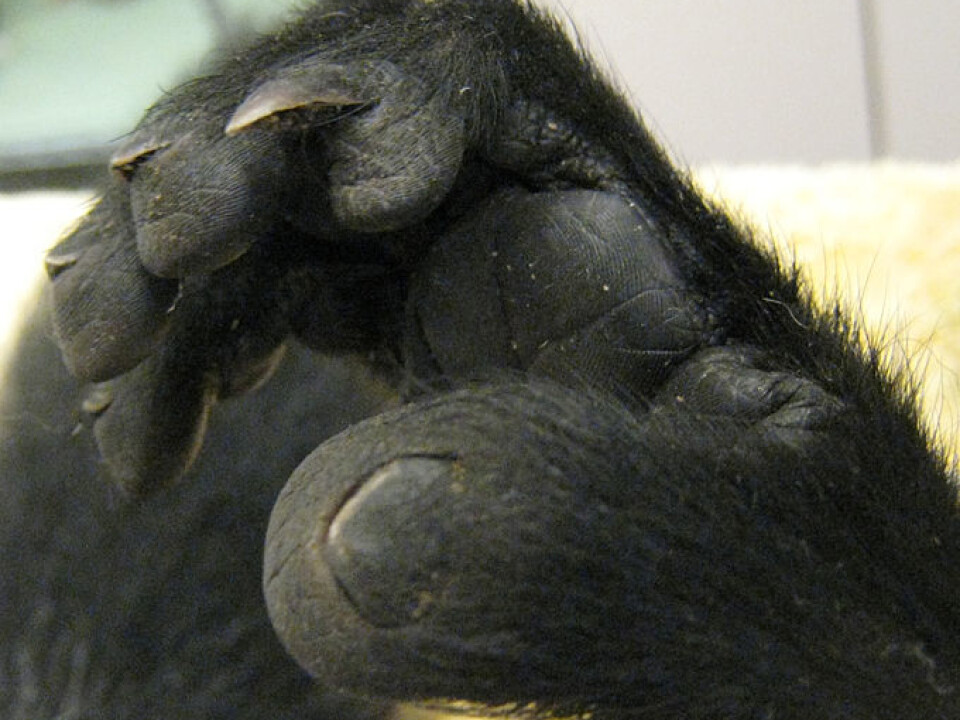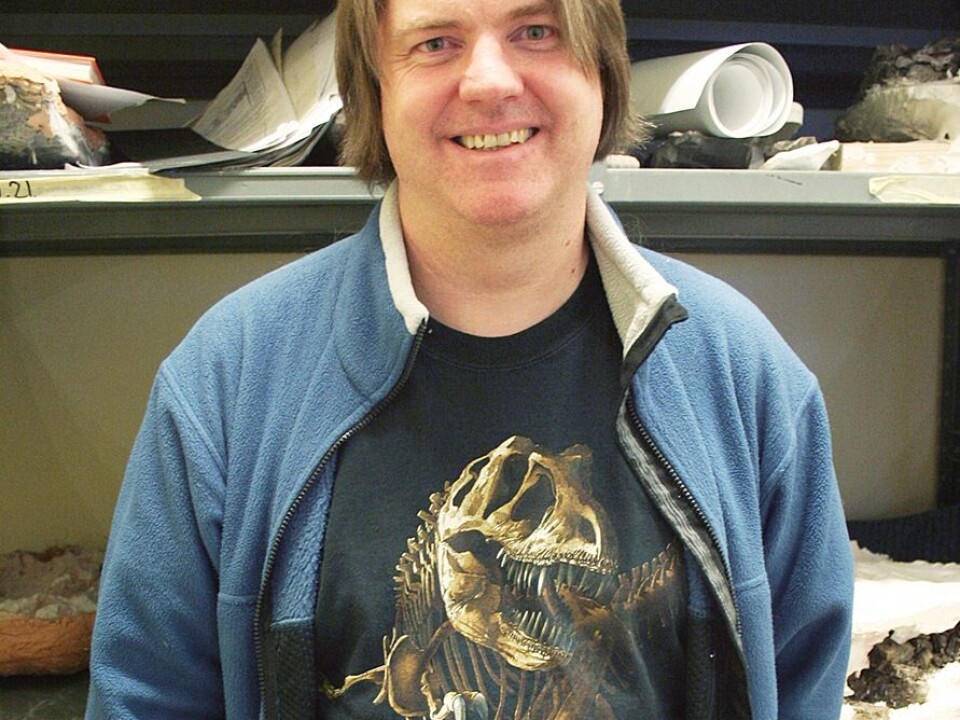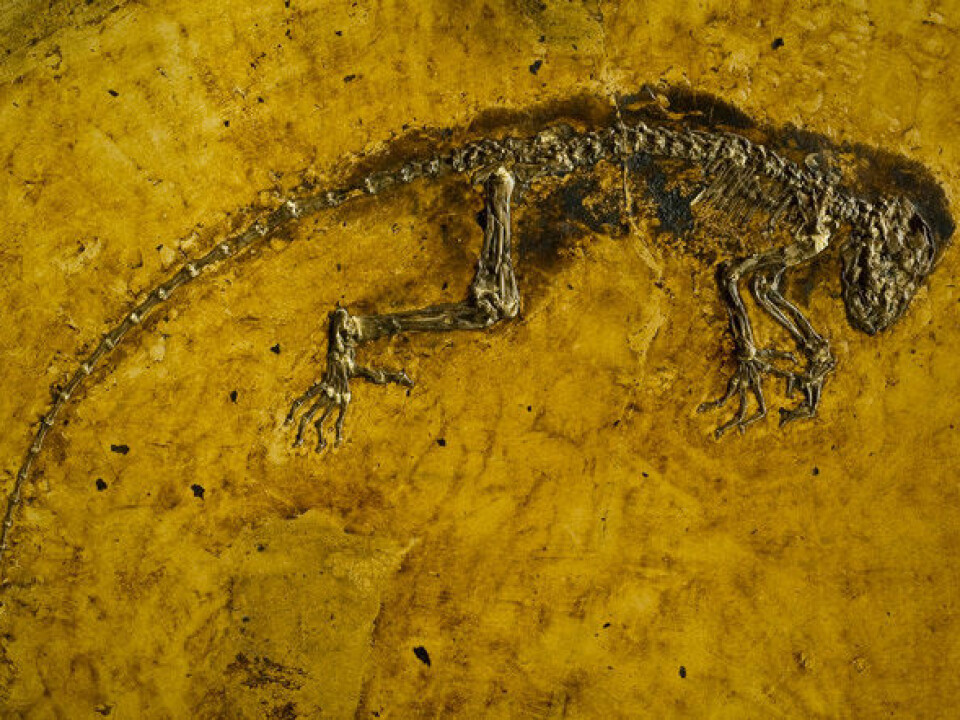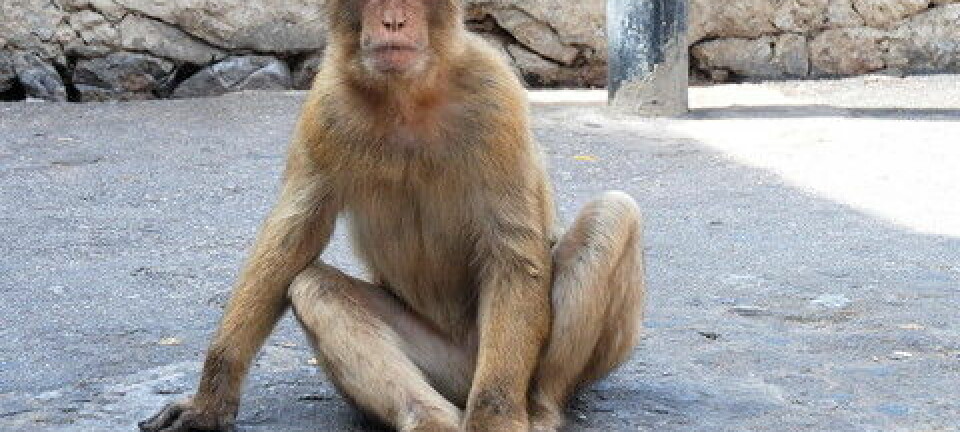
A toe’s tale of monkeys and lemurs
If a fossil has a special second toe, is it an ape or a lemur? A new study has raised doubts about the elongated “toilet claw”, and places Ida – thought to be the earliest and most complete fossil found in our primate group – among the lemurs.
Denne artikkelen er over ti år gammel og kan inneholde utdatert informasjon.
A toilet claw is a specialised second toe which lemurs have adjacent to their big toes. It’s elongated and used for grooming.
Thus it’s also called a grooming claw and it has long been used by scientists who conduct research on extinct monkeys and lemurs as a feature for distinguishing between the two groups:
If the outer toe bone on the fossil is pointed it’s interpreted as indicative of a grooming claw, and then the assumption is that this is a lemur. But a blunt toe bone indicates that it had sported a toenail and was a monkey.
However, a new study of this toe on the primate fossil Notharctus tenebrosus has characteristics linked to both toenails and to grooming claws. The rest of the Notharctus anatomy is lemur-like.
The similarity leads the researchers involved in this study to question the conclusions about the fossil Ida, which has been heralded as the earliest and most complete fossil found in our primate group, in part because it has no grooming claw. They write that Ida’s lack of this grooming claw does not exclude her from being a lemur.
Norwegian palaeontologist Jørn Hurum, who brought the remarkable Ida fossil to the Natural History Museum in Oslo in 2009, thinks the issue isn’t that easily put to rest:

“Several new studies have been made of grooming claws since we presented Ida, and both this study and the others show things aren’t as simple as we used to think,” he says.
Grooming claws are primitive traits, not advanced
It’s an issue of the closely intertwined areas at the root of the evolutionary tree, and what came first.
Monkeys, apes and humans (anthropoid primates) and lemurs (strepssirhine primates) share a common ancestry but they branched apart from a basal primate on the evolutionary tree about 63 million years ago.

Since then they have evolved differently and now we can readily distinguish between a lemur and a monkey. Until now scientists have also assumed that a grooming claw was developed after anthropoid primates and lemurs parted ways, and thus all fossils we find with this feature are the forerunners of lemurs.
All such fossils without a grooming claw are either from a primal type that lived before monkeys and lemurs split, or – if the fossil is less than 63 million years old – it’s from a monkey.
In the first scientific description of the fossil Darwinius masillae, better known as Ida, researchers wrote that she didn’t seem to have a grooming claw. Ida is 47 million years old, and her lack of the claw was considered strong evidence that she belonged to our group of primates.
But what if a primal ancestor of monkeys and apes also had a grooming claw?
In that case the claw would be a primitive anatomical trait which evolved before the two groups branched off. The alternative to this is designated as an advanced trait, that is, it’s a feature that turned up after they branched.

If the grooming claw is a primitive trait this of course doesn’t make Ida a lemur. It only means that Ida’s lack of the claw doesn’t preclude her from being one.
A lack of a grooming claw is no monkey guarantee
In the study of Notharctus, which is being published this wek in the journal PLoS One, researchers from the University of Florida and several other American institutions write that this little primate has a distinct grooming claw on its second digit. However this particular claw is nearly flat, like a toenail.
It looks like a transitional phase between a grooming claw and a nail.
What does this mean as regards whether Notharctus is a lemur or a monkey? That’s not an easy question:
“Notharctus was either in the process of evolving a nail and becoming more like humans, apes and monkeys, or in the process of evolving a more lemur-like claw,” says Doug Boyer, assistant professor at Brooklyn College i New York and a co-author of the study, in a press release from the University of Florida.
However, researchers have compared the anatomy of both Notharctus and Ida with other known living and fossil primates. They conclude that both – regardless of whether you account for grooming claws or not – are more closely related to lemurs than monkeys, apes and humans.
So:
Both Ida and Notharctus are more related to lemurs but you have to look at other characteristics than the presence or absence of a grooming claw to reach that conclusion. They think Ida’s lack of a grooming claw doesn’t make her an anthropoid primate.
Harder to determine
Jørn Hurum, who is considered to be Ida’s “father”, thinks the American study proves how difficult it is to tell whether we’re dealing with lemurs or not when considering these fossils.
“They appear to have concluded that the issue of grooming claws is more complicated than we thought,” he says after reading the press release from Florida.
“It looks as if Notharctus has something in between, a flat claw that is close to being a nail. So they obviously think nails, rather than grooming claws, comprise the primitive trait. Or else nails re-evolved several times – we just don’t have a good grip on this yet.”
Hurum explains that the evolutionary process gets increasingly detailed and complex the more fossils you find:
“If you just have a couple of bones, it’s easy to see the difference between them and place them in separate groups. But as time passes and you discover more and more complete fossils, it all gets more complicated. Anatomical traits that we formerly thought belonged to a single species start turning up on fossils of other species. We also find examples of a species that lack traits we formerly considered as defining characteristics of their group," says Hurum.
As regards Ida, Hurum isn’t really sure anymore if she had a grooming claw or not.
“We’ve created a micro-CT model of Ida’s entire foot, and we’ve found that the particular toe that either should have a claw or a nail is partially damaged. It’s just a matter of a few tenths of a millimetre off the tip where the toe becomes a pointed, but it means we can’t say for sure what she had,” explains Hurum.
Fewer distinctions between monkeys and lemurs
Hurum doesn’t think the new study shows that Ida was a lemur, however. It indicates that maybe grooming claws aren’t the best test for determining if she was a lemur:
“So far Ida has blown away two traits that previously were thought to distinguish between lemurs and monkeys. First it was the ankle bone, which until Ida turned up was believed to have one form among lemurs and another among monkeys. But our study contradicts this – there are several instances of fossils that are placed among the monkeys that have lemur-like ankle bones. So this is no longer a distinguishing trait,” he says.
“Now it looks like the grooming claw argument is also disappearing. This gives us even fewer characteristics that define the division between lemurs and monkeys.”
More complete fossils needed
So what would give Ida – and Notharctus – their permanent placements either among lemurs or among our branch leading to today’s monkeys, apes and humans? According to Hurum the answer will hopefully turn up some day in a sedimentary rock:
“Probably the only way to get a better answer to that is to find some more complete primate fossils like Ida. Maybe we’ll uncover primates as old as Ida that already have more advanced monkey traits – that might indicate that Ida is in the ape group. Or perhaps we’ll find older primates that are definitely lemurs? That would make us think she is a lemur or maybe a member of an extinct side branch. More complete finds along these lines that further our knowledge about the primates of the past will provide the answer.”
“It’s feasible that Ida will end up in the lemur camp, but we don’t know yet. She has several anatomical traits that she only shares with the monkeys and apes. I wonder what the next trait will be that is discarded as a defining characteristic. We’ll just have to take it as it comes,” says Hurum.
Translated by: Glenn Ostling































